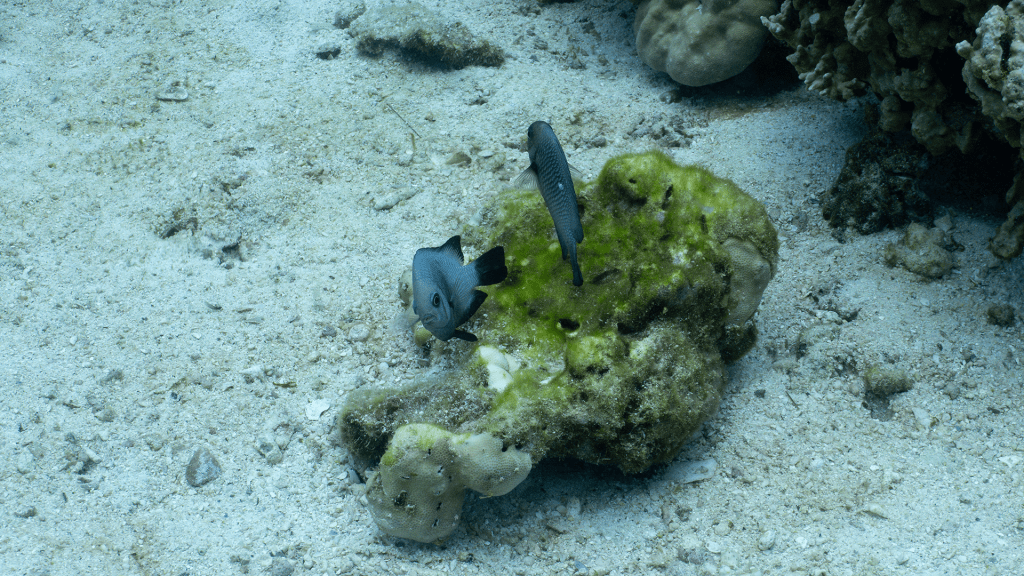Three-spot Dascullus

The three-spot dascyllus (Dascyllus trimaculatus) gets its name from its distinctive coloration: its grayish-black body features two white spots on the sides and one between the eyes, resembling the pattern of a domino. This fish can grow up to 13 cm in length. Its coloration varies—some individuals lack the forehead spot, while the side markings may be significantly reduced.
The diet of the three-spot dascyllus mainly consists of algae, copepods, and other small planktonic crustaceans.
During spawning, males attach the eggs to cave walls or hidden crevices and guard them. A typical clutch contains around 1,000 eggs. After three days, larvae measuring approximately 2 mm hatch and initially lead a pelagic (free-swimming) lifestyle. About 10 days after hatching, the parents begin the spawning process again.
This species inhabits coral and rocky reefs at depths ranging from 1 to 55 meters. Adults tend to stay in small groups near coral formations or large rocks, while juveniles often seek shelter among branching corals, the spines of long-spined sea urchins (Diadema spp.), or in close association with sea anemones.
Young three-spot dascyllus live symbiotically with anemones such as Entacmaea quadricolor and species from the genera Heteractis and Stichodactyla. The anemones provide protection from predators, allowing the juveniles to develop safely. As they mature, these fish become less dependent on anemones and prefer to stay near coral reefs or rocky structures.
